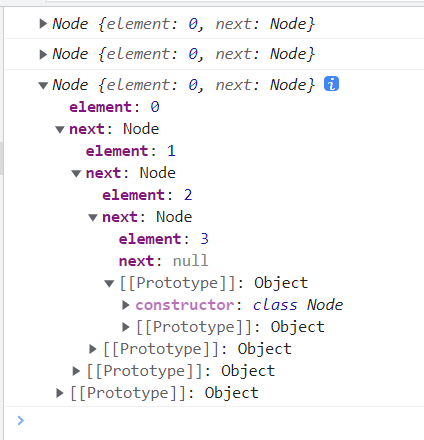
append() 在链表后添加节点
// 定义链表// 同样使用 ES6 class 和立即执行函数let LinkedList = (function() {// 定义一个链表class Node {// 初始化链表constructor(element) {this.element = element;this.next = null;}}// 定义链表初始化值let length = new WeakMap(); // 初始时,链表的长度let head = new WeakMap(); // 初始时, 链表的头部// 返回的链表return class LinkedList {constructor() {// 初始化length.set(this, 0);head.set(this, null);}// 链表的方法// append 在链表最后添加节点append(element) {// 创建节点let node = new Node(element),// 声明一个变量, 用于获取链表的位置current;// 判断链表是否有数据if (this.getHeader() === null) {// 当链表为空的情况下head.set(this, node); // 直接添加} else {// 链表头部不为空// 找到链表最末的节点, 让最末的节点的 next 指向添的nodecurrent = this.getHeader(); // 获取 head// 判断当前节点的next存在while (current.next) {// next ++ ,一直循环current = current.next;}// 进行while循环完后,current 就为最后的节点。// 然后进行赋值current.next = node;// 赋值后,让链表长度 +1// 使用size获取链表的长度let l = this.size();l++; // 让链表的长度加一length.set(this, l); // 重新赋值// 追加后,返回head, 查看headconsole.log(this.getHeader());}}// 判断链表的头部getHeader() {return head.get(this);}// 返回链表的长度size() {return length.get(this);}}})();let list = new LinkedList();list.append(0);list.append(1);list.append(2);list.append(3);/** 输出this.getHeader() 能够查看到链表的情况*/

输出结果

